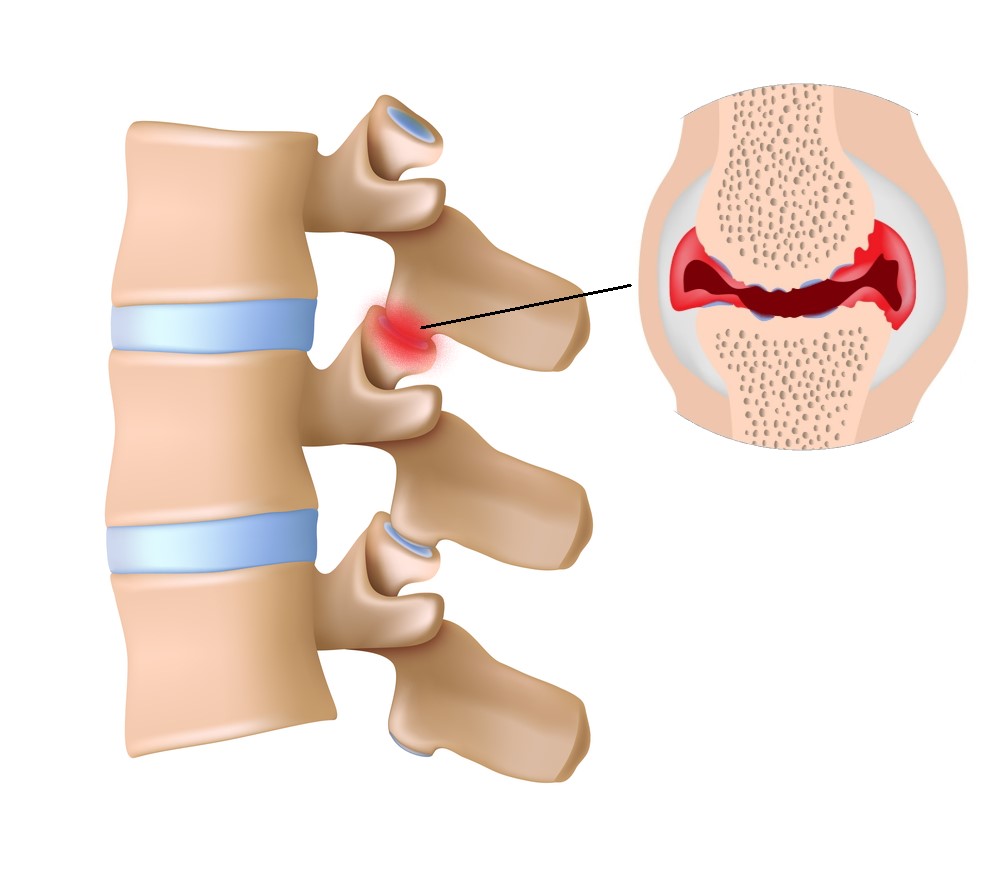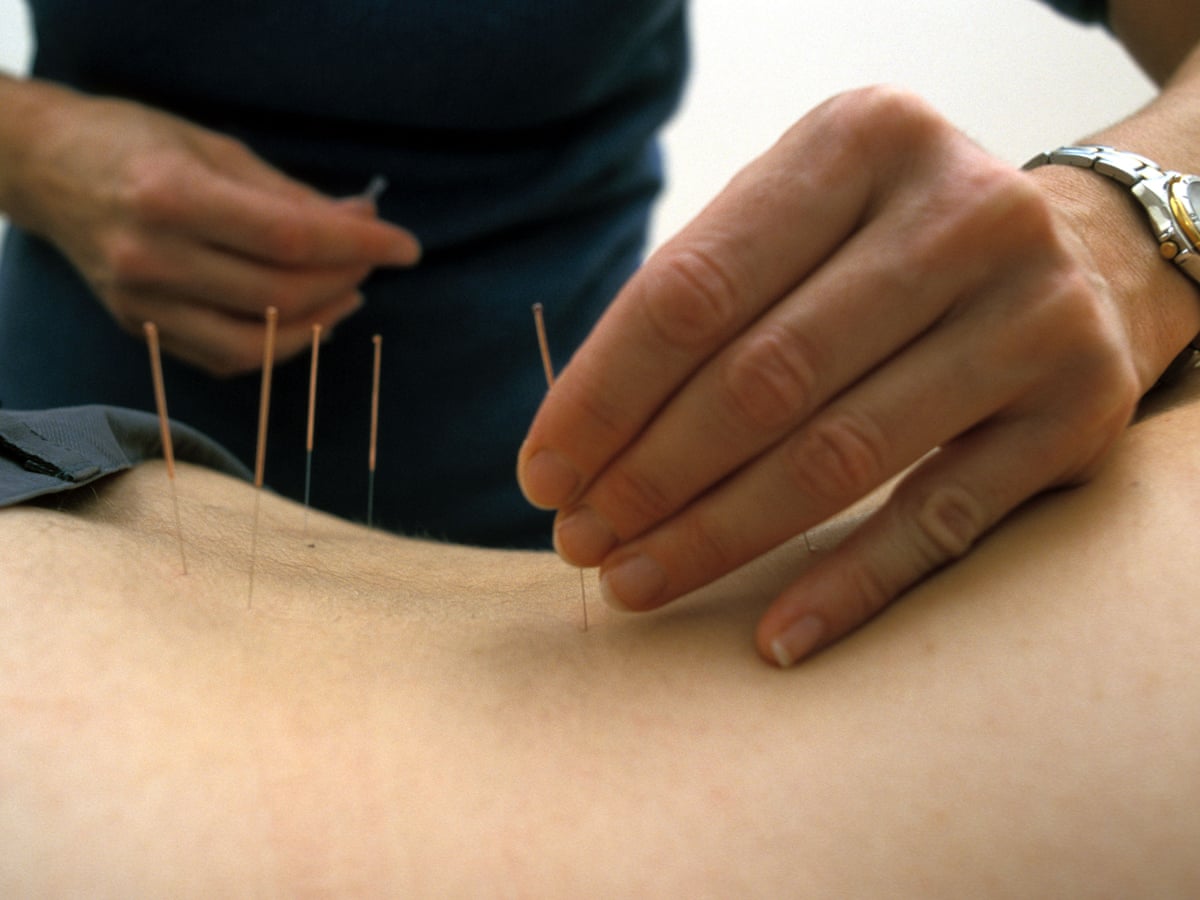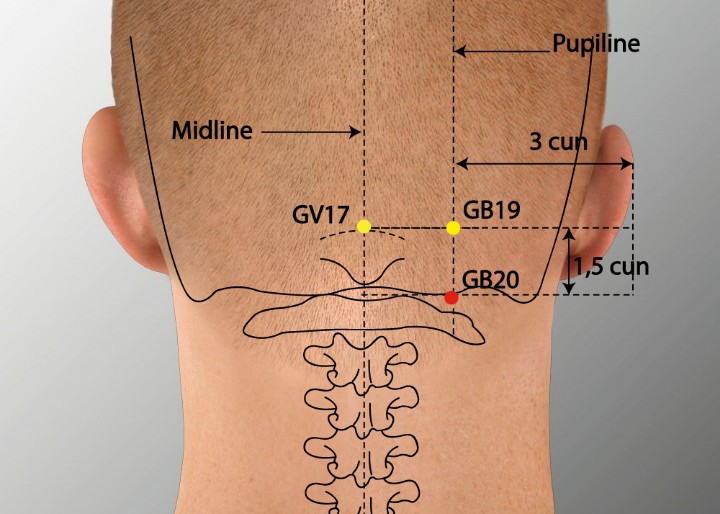Zygapophyseal Joint Pain and Acupuncture Treatment
Zygapophyseal joint pain, commonly referred to as facet joint pain, is a prevalent cause of chronic back and neck pain that affects millions of individuals worldwide. This condition arises from the zygapophyseal joints, also known as facet joints, which are small stabilizing joints located between and behind adjacent vertebrae in the spine. These joints play a critical role in facilitating spinal movement while providing stability. When they become inflamed, irritated, or dysfunctional, they can cause significant discomfort, impacting daily activities and quality of life.
Acupuncture, a cornerstone of traditional Oriental medicine (TOM), has gained recognition as an effective complementary therapy for managing various types of pain, including zygapophyseal joint pain. By stimulating specific acupoints, acupuncture aims to restore balance in the body’s energy flow, reduce inflammation, and alleviate pain. This comprehensive 4000-word article explores the definition, causes, and symptoms of zygapophyseal joint pain, the mechanisms by which acupuncture can treat this condition, and the key acupoints used in its management. This article provides valuable insights for those seeking natural pain relief options.
- What is Zygapophyseal Joint Pain?
- Definition and Anatomy
- Causes of Zygapophyseal Joint Pain
- Symptoms of Zygapophyseal Joint Pain
- Acupuncture and Its Role in Pain Management
- What is Acupuncture?
- How Acupuncture Treats Zygapophyseal Joint Pain
- Key Acupoints for Zygapophyseal Joint Pain
- Benefits of Acupuncture for Zygapophyseal Joint Pain
- What to Expect During Acupuncture Treatment
- Scientific Evidence Supporting Acupuncture for Facet Joint Pain
- Precautions and Considerations
- Conclusion
What is Zygapophyseal Joint Pain?
Definition and Anatomy
Zygapophyseal joints, or facet joints, are synovial joints located in pairs at each level of the spine, from the cervical (neck) to the lumbar (lower back) regions. These joints connect the vertebrae, allowing for smooth movements such as bending, twisting, and extending the spine. Each facet joint is encapsulated by a joint capsule filled with synovial fluid, which lubricates the joint to reduce friction during movement. The joints are lined with cartilage and surrounded by ligaments, nerves, and muscles, making them susceptible to various forms of dysfunction.
Maybe You Need:
Zygapophyseal joint pain occurs when these joints become irritated, inflamed, or degenerated, leading to localized or referred pain. The pain may manifest in the neck, upper back, or lower back, depending on the affected spinal region. It is often described as a deep, aching sensation that worsens with certain movements, such as twisting or bending backward.

Causes of Zygapophyseal Joint Pain
Several factors can contribute to zygapophyseal joint pain, including:
- Degenerative Changes (Osteoarthritis): As individuals age, the cartilage within facet joints may wear down, leading to osteoarthritis. This degeneration causes bone-on-bone friction, inflammation, and pain.
- Trauma or Injury: Acute injuries, such as whiplash from a car accident or sports-related trauma, can damage the facet joints or their surrounding structures, leading to pain.
- Repetitive Stress: Poor posture, repetitive spinal movements, or occupational strain (e.g., prolonged sitting or heavy lifting) can overload the facet joints, causing irritation.
- Inflammation: Conditions like rheumatoid arthritis or ankylosing spondylitis can lead to inflammation of the facet joints, exacerbating pain.
- Facet Joint Syndrome: This condition occurs when the facet joints become a primary source of pain due to dysfunction, often accompanied by muscle spasms and stiffness.
- Spinal Misalignment: Abnormal spinal alignment or instability, such as in spondylolisthesis, can place excessive stress on the facet joints.

Symptoms of Zygapophyseal Joint Pain
The symptoms of zygapophyseal joint pain vary depending on the spinal region affected. Common symptoms include:
- Localized Pain: A deep, aching pain in the neck, mid-back, or lower back, often on one side of the spine.
- Referred Pain: Pain may radiate to nearby areas, such as the shoulders, hips, or buttocks, but typically does not extend below the knee or elbow.
- Stiffness: Reduced range of motion in the affected spinal region, particularly during twisting or bending.
- Pain Aggravation: Discomfort that worsens with specific movements, such as arching the back or turning the head.
- Tenderness: Localized tenderness when pressure is applied over the affected facet joints.
- Muscle Spasms: Tightness or spasms in the muscles surrounding the affected joints.
In some cases, zygapophyseal joint pain may mimic other conditions, such as disc herniation or sciatica, making accurate diagnosis essential. Diagnostic tools like X-rays, MRI, or diagnostic facet joint injections can help confirm the source of pain.
Acupuncture and Its Role in Pain Management
What is Acupuncture?
Acupuncture is a therapeutic technique rooted in traditional Oriental medicine, practiced for over 2,500 years. It involves the insertion of thin, sterile needles into specific points on the body, known as acupoints, to stimulate the body’s natural healing processes. According to TOM principles, acupuncture restores the balance of vital energy that flows through pathways called meridians. Disruptions in energy flow are believed to contribute to pain and illness.
From a Western medical perspective, acupuncture is thought to stimulate the nervous system, release endorphins, and modulate pain signals. It has been widely studied for its efficacy in treating chronic pain conditions, including back pain, neck pain, and joint pain.
How Acupuncture Treats Zygapophyseal Joint Pain
Acupuncture offers a multifaceted approach to managing zygapophyseal joint pain by addressing both the symptoms and underlying causes. The key mechanisms include:
- Pain Modulation: Acupuncture stimulates the release of endorphins, the body’s natural painkillers, which help reduce the perception of pain. It also activates the body’s opioid system, enhancing pain relief.
- Anti-Inflammatory Effects: By targeting specific acupoints, acupuncture can reduce inflammation in the facet joints and surrounding tissues, alleviating swelling and discomfort.
- Improved Blood Circulation: Acupuncture promotes blood flow to the affected area, delivering oxygen and nutrients to support tissue repair and reduce muscle tension.
- Muscle Relaxation: The insertion of needles into trigger points or tight muscles around the facet joints can relieve spasms and improve flexibility.
- Nervous System Regulation: Acupuncture influences the autonomic nervous system, balancing sympathetic (fight-or-flight) and parasympathetic (rest-and-digest) activity to reduce stress-related pain amplification.
- Holistic Approach: Acupuncture addresses not only physical pain but also emotional and psychological factors, such as stress or anxiety, which can exacerbate chronic pain conditions.
Clinical studies have shown that acupuncture is effective for managing chronic back and neck pain, including pain originating from the facet joints. A 2018 meta-analysis published in The Journal of Pain found that acupuncture provided significant pain relief and improved function in patients with chronic low back pain compared to sham acupuncture or no treatment.

Key Acupoints for Zygapophyseal Joint Pain
Acupuncture treatment for zygapophyseal joint pain, also known as facet joint pain, is customized based on the patient’s specific symptoms, the spinal region affected (cervical, thoracic, or lumbar), and the underlying Traditional energy Medicine (TOM) diagnosis, such as energy stagnation, blood stasis, or excess dampness. Acupoints are carefully selected to target pain, reduce inflammation, and promote healing. Below is a clear and concise guide to the primary acupoints used for zygapophyseal joint pain, organized by spinal region, with their locations and therapeutic benefits.
Acupoints for Cervical (Neck) Facet Joint Pain
These acupoints address neck pain, stiffness, and associated symptoms like headaches caused by cervical facet joint dysfunction:
- GB20 (Fengchi – Wind Pool):
Location: At the base of the skull, in the hollow between the upper trapezius and sternocleidomastoid muscles.
Benefits: Relieves neck pain, reduces stiffness, and alleviates headaches commonly linked to cervical facet joint issues. It also promotes relaxation of neck muscles.

- BL10 (Tianzhu – Celestial Pillar):
Location:3 cun (approximately one thumb’s width) lateral to the midline, just below the occipital bone at the back of the neck.
Benefits: Eases neck pain and muscle tension, particularly effective for stiffness caused by facet joint irritation. - SI11 (Tianzhong – Celestial Gathering):
Location: On the scapula, in the center of the infraspinous fossa (below the shoulder blade’s spine).
Benefits: Reduces referred pain from cervical facet joints that radiates to the shoulders, improving mobility and relieving tension. - LI4 (Hegu – Joining Valley):
Location: On the hand, in the webbing between the thumb and index finger.
Benefits: A powerful distal point for general pain relief, often combined with local neck points to enhance pain reduction and relax muscles. - Local Ashi Points:
Location: Tender spots around the cervical facet joints, identified by palpation.
Benefits: Directly targets localized pain and inflammation in the affected cervical joints, providing immediate relief.
Acupoints for Thoracic (Mid-Back) Facet Joint Pain
These acupoints focus on alleviating mid-back pain and stiffness associated with thoracic facet joint dysfunction:
- BL13 (Feishu – Lung Shu):
Location:5 cun lateral to the spinous process of the T3 vertebra (third thoracic vertebra).
Benefits: Reduces mid-back pain and stiffness, supporting respiratory health and spinal mobility.

- BL15 (Xinshu – Heart Shu):
Location:5 cun lateral to the spinous process of the T5 vertebra.
Benefits: Relieves thoracic pain, promotes relaxation, and improves energy flow in the mid-back region. - BL17 (Geshu – Diaphragm Shu):
Location:5 cun lateral to the spinous process of the T7 vertebra.
Benefits: Enhances blood circulation, reduces inflammation, and alleviates mid-back pain. - GV9 (Zhiyang – Reaching Yang):
Location: On the midline of the back, directly below the spinous process of the T7 vertebra.
Benefits: Treats mid-back pain and stiffness, particularly effective for addressing spinal tension. - Local Ashi Points:
Location: Tender areas along the thoracic spine, identified during examination.
Benefits: Targets localized inflammation and pain in the thoracic facet joints for direct relief.
Acupoints for Lumbar (Lower Back) Facet Joint Pain
These acupoints are used to manage lower back pain and stiffness caused by lumbar facet joint dysfunction:
- BL23 (Shenshu – Kidney Shu):
Location:5 cun lateral to the spinous process of the L2 vertebra (second lumbar vertebra).
Benefits: Strengthens the lower back, reduces lumbar pain, and supports kidney function in TOM, which is linked to spinal health.

- BL25 (Dachangshu – Large Intestine Shu):
Location:5 cun lateral to the spinous process of the L4 vertebra.
Benefits: Alleviates lower back pain and stiffness, particularly effective for facet joint-related discomfort. - BL40 (Weizhong – Supporting Middle):
Location: In the center of the popliteal crease (back of the knee).
Benefits: A distal point that relieves lower back pain and sciatica-like symptoms by relaxing muscles and improving energy flow. - GV3 (Yaoyangguan – Lumbar Yang Gate):
Location: On the midline of the lower back, below the spinous process of the L4 vertebra.
Benefits: Reduces lumbar pain and stiffness, promoting flexibility and easing facet joint discomfort. - Local Ashi Points:
Location: Tender spots around the lumbar facet joints, identified by palpation.
Benefits: Directly addresses localized pain and inflammation in the lumbar region for targeted relief.
General Pain Relief and Supporting Acupoints
These acupoints are used across all spinal regions to enhance pain relief, improve energy flow, and support overall healing:
- LI4 (Hegu – Joining Valley):
Location: As described above, between the thumb and index finger.
Benefits: Provides systemic pain relief, reduces inflammation, and complements local acupoints for enhanced results.

- ST36 (Zusanli – Leg Three Miles):
Location: On the lower leg, 3 cun below the knee and 1 cun lateral to the tibia.
Benefits: Boosts overall energy, strengthens the immune system, and supports pain relief throughout the body. - SP6 (Sanyinjiao – Three Yin Intersection):
Location: 3 cun above the medial malleolus (inner ankle), along the inner leg.
Benefits: Promotes blood circulation, reduces pain in the lower body, and supports overall balance in TOM. - GB34 (Yanglingquan – Yang Mound Spring):
Location: In the depression anterior and inferior to the head of the fibula (below the knee).
Benefits: Relieves muscle tension, reduces joint pain, and improves mobility, especially in the lower back and legs.
Acupuncturists select a combination of local points (near the affected facet joints), distal points (on distant parts of the body), and ashi points (tender spots) to create a comprehensive treatment plan. The needles are inserted to a depth of a few millimeters to centimeters, depending on the point’s location, and may be gently manipulated to stimulate the area. Treatments may also incorporate techniques like electroacupuncture (applying mild electrical currents to needles) or moxibustion (warming acupoints with burning mugwort) to enhance pain relief and healing.
This structured approach ensures that acupuncture effectively targets zygapophyseal joint pain while addressing the patient’s overall health and energy balance.
In addition to selecting appropriate acupoints, acupuncturists may use various techniques to enhance treatment outcomes:
- Manual Acupuncture: Involves inserting and manipulating needles to stimulate acupoints.
- Electroacupuncture: Uses mild electrical currents applied to the needles to enhance stimulation, particularly for chronic pain.
- Moxibustion: Involves burning mugwort (moxa) near acupoints to warm the area, improve circulation, and reduce pain.
- Cupping Therapy: May be used in conjunction with acupuncture to relieve muscle tension and improve blood flow.
- Trigger Point Needling: Targets specific myofascial trigger points around the facet joints to release muscle knots and alleviate referred pain.
Benefits of Acupuncture for Zygapophyseal Joint Pain
Acupuncture offers several advantages for individuals suffering from zygapophyseal joint pain:
- Non-Invasive: Unlike surgical interventions or injections, acupuncture is minimally invasive and carries a low risk of adverse effects.
- Personalized Treatment: Acupuncturists tailor treatments to the individual’s specific symptoms and TOM diagnosis, ensuring a holistic approach.
- Complementary to Other Therapies: Acupuncture can be used alongside physical therapy, chiropractic care, or medication to enhance pain relief.
- Minimal Side Effects: When performed by a licensed practitioner, acupuncture is generally safe, with mild side effects like temporary soreness or bruising.
- Improved Quality of Life: By reducing pain and improving mobility, acupuncture can help patients return to daily activities and improve overall well-being.

What to Expect During Acupuncture Treatment
Initial Consultation
Before starting acupuncture, patients undergo a comprehensive consultation with a licensed acupuncturist. The practitioner will assess the patient’s medical history, symptoms, and lifestyle factors. In TOM, the acupuncturist may also evaluate the patient’s pulse, tongue, and overall energy balance to determine the underlying cause of the pain (e.g., Energy stagnation, blood stasis, or dampness).
Treatment Sessions
- Frequency and Duration: Treatment plans vary, but patients typically receive 1–2 sessions per week for 4–12 weeks, depending on the severity of the pain. Each session lasts 30–60 minutes.
- Procedure: The patient lies on a treatment table, and the acupuncturist inserts thin needles into the selected acupoints. The needles are typically left in place for 15–30 minutes. Patients may feel a mild tingling or warmth at the needle sites.
- Sensation: Acupuncture is generally painless, though some patients may experience a slight pinch or dull ache during needle insertion.
Post-Treatment Care
After an acupuncture session, patients are advised to rest, stay hydrated, and avoid strenuous activities for 24 hours. Some individuals may experience immediate pain relief, while others may require multiple sessions to notice significant improvements.
Scientific Evidence Supporting Acupuncture for Facet Joint Pain
Numerous studies have investigated the efficacy of acupuncture for chronic back and neck pain, including pain originating from the facet joints. Key findings include:
- A 2016 study published in Pain Medicine found that acupuncture significantly reduced pain intensity and improved function in patients with chronic low back pain, including those with facet joint involvement.
- A 2019 systematic review in Evidence-Based Complementary and Alternative Medicine concluded that acupuncture was effective for relieving neck pain associated with cervical facet joint dysfunction.
- A 2020 randomized controlled trial in The Journal of Alternative and Complementary Medicine demonstrated that electroacupuncture provided greater pain relief than sham acupuncture for patients with lumbar facet joint pain.
While more research is needed to establish standardized protocols for acupuncture in treating zygapophyseal joint pain, the existing evidence supports its use as a safe and effective complementary therapy.
:max_bytes(150000):strip_icc()/GettyImages-1933039407-467e12677d4b439b894b7fcb55acd4ba.jpg)
Precautions and Considerations
While acupuncture is generally safe, certain precautions should be taken:
- Choose a Licensed Practitioner: Ensure the acupuncturist is certified and trained to perform acupuncture safely.
- Medical History Disclosure: Inform the practitioner of any medical conditions, medications, or pregnancy to avoid complications.
- Contraindications: Acupuncture may not be suitable for individuals with bleeding disorders, those on blood thinners, or those with severe infections at the treatment site.
- Integration with Conventional Care: Acupuncture should complement, not replace, conventional treatments like physical therapy or medication. Consult a healthcare provider for a comprehensive treatment plan.
Conclusion
Zygapophyseal joint pain, or facet joint pain, is a common cause of chronic back and neck pain that can significantly impact daily life. Acupuncture offers a promising, non-invasive approach to managing this condition by reducing pain, inflammation, and muscle tension while promoting overall well-being. By targeting specific acupoints, such as GB20, BL23, and LI4, acupuncture addresses both the symptoms and underlying causes of facet joint pain.
For individuals seeking a natural, holistic approach to pain relief, acupuncture provides a safe and effective option. When combined with conventional treatments, it can enhance outcomes and improve quality of life. If you’re considering acupuncture for zygapophyseal joint pain, consult a licensed acupuncturist to develop a personalized treatment plan tailored to your needs.
By understanding the causes, symptoms, and treatment options for zygapophyseal joint pain, you can take proactive steps toward managing your condition and reclaiming a pain-free life.
Fuji Wellness:
- Address: 132-0031 Matsushima 1-chome, 21-14, Tokyo, Japan
- Chat with us: Click here
- Email: sunnyphamsensei@gmail.com




